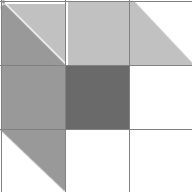I found you can create unique building sizes with perspective with six tiles using parallel projection, whose angles are always 45 degrees... this allows you to connect to the next tile without issue:


The issue with that is you're stuck to a 45 degree angle... I feel like a 75 degree angle better matches my game's overall perspective...

But doing anything other than 45 degrees limits how deep my building is (how far back the building top goes)... so this seems to force me to create additional buildings if I want to make the top reach back further... Which adds complexity


Question:
Is there a way to achieve what I'm doing for any angle I choose such that I can create one building tileset (of 6 tiles) and create dynamic cities?
Or, do I have to sacrifice the angle of my choosing and go with the simple 45 degrees?
Thanks
